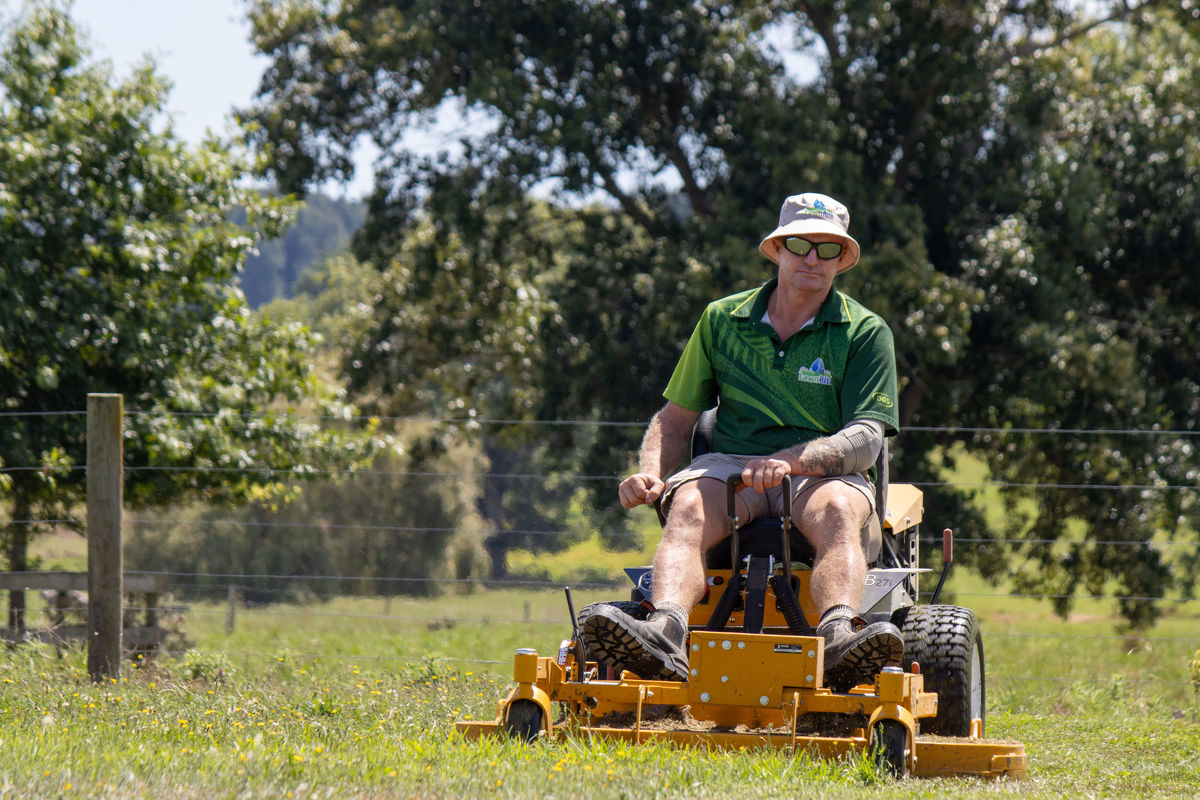Long Or Short
Date: 20 Mar 2024
Every homeowner wants a beautiful, lush lawn, but the question of ideal grass height can be a source of confusion. Should you keep it neatly trimmed or let it grow wild? Both options have their advocates, and the "ideal" length can vary depending on your location and desired outcome. This guide dives deep into the pros and cons of each approach, empowering you to make informed decisions for a healthy, beautiful lawn.
Pros of Cutting Lawn Short
There are several advantages to maintaining a short lawn:
● Reduced Maintenance: Short grass requires less frequent mowing, saving you time and effort. This can be particularly beneficial for busy homeowners or those with large yards.
● Improved Visibility: A neatly trimmed lawn offers better visibility, making it easier to spot potential hazards like uneven surfaces or hidden objects. This can be important for families with young children or pets.
● Discourages Pests: Insects like mosquitoes and ticks tend to thrive in tall grass. Keeping your lawn short discourages these pests, creating a safer environment for your family and pets.
● Aesthetics: Many people find a manicured lawn visually appealing. A well-maintained, short lawn enhances the curb appeal of your property.
● Faster Drying: After rain showers, a short lawn dries out quicker, allowing you to resume outdoor activities sooner. This is especially crucial if you enjoy spending time outdoors after a downpour.
Cons of Cutting Lawn Short
While there are benefits to keeping your lawn short, there are also some drawbacks to consider:
● Promotes Weed Growth: Frequent mowing removes taller blades of grass, allowing sunlight to reach the soil. This creates an ideal environment for weed seeds to germinate and thrive. You may need to invest in additional weed control measures.
● Weakens Roots: Cutting grass too short removes a significant portion of the blade, which also reduces the plant's food production capabilities. This can
weaken the root system, making the lawn more susceptible to drought and
disease.
● Increased Water Needs: Short grass exposes more soil to the sun, leading to
faster evaporation. This means you may need to water your lawn more
frequently, especially during hot and dry periods.
● Reduced Soil Health: Frequent mowing can damage the top layer of soil,
impacting its ability to retain moisture and nutrients.
Pros of Keeping Lawn Long
Letting your grass grow a bit longer can offer some surprising benefits:
● Healthier Roots: Taller grass blades allow for increased photosynthesis, leading to the production of more food for the plant. This translates to stronger, healthier roots that can better absorb water and nutrients from the soil.
● Reduced Weed Growth: Tall grass shades the ground, preventing weed seeds from getting the sunlight they need to germinate. This can help suppress weed growth naturally.
● Improved Water Retention: Longer grass blades act like a natural mulch, shading the soil and minimising water evaporation. This can significantly reduce your lawn's watering needs, especially during droughts.
● Habitat for Beneficial Creatures: A taller lawn provides habitat for beneficial insects like ladybugs and pollinators, promoting a healthy ecosystem in your yard.
● Erosion Control: Longer grass helps hold soil in place, reducing erosion, especially on slopes.
Cons of Keeping Lawn Long
While there are advantages to a longer lawn, there are also some downsides to consider:
● Increased Maintenance: Taller grass requires more frequent trimming to maintain a neat appearance.
● Unkempt Appearance: Some homeowners find long grass to be untidy and overgrown.
● Pest Concerns: While some beneficial insects are attracted to taller grass, it can also provide a haven for unwanted pests like ticks and mosquitoes.
● Mowing Difficulty: Mowing overly tall grass can be challenging and may require specialised equipment. Cutting very tall grass all at once can stress the lawn, so it's best to gradually reduce the height over several mowing sessions.
Deciding Whether to Keep Grass Short or Long: Finding the Right Balance
Ultimately, the ideal grass height for your lawn depends on your priorities and circumstances.
Benefits of Keeping your Lawn Short:
● Low maintenance: Short grass requires less frequent mowing, freeing up your time for other activities.
● Safe for children or pets who play in the yard frequently: A shorter lawn provides better visibility of potential hazards like uneven surfaces, rocks, or toys left behind. This can help prevent accidents and injuries. Short grass offers a safe and comfortable surface for children and pets to run and play on.
● Helps prevent mosquitoes: Keeping your lawn short discourages mosquitoes, which prefer to lay eggs in tall grass. This can help create a more enjoyable outdoor experience for everyone.
● Activities after rain: A short lawn dries out quicker, allowing you to resume activities like playing catch or frisbee sooner after a downpour.
Benefits of Keeping your Lawn Long:
● Promotes a healthy lawn with strong roots: Taller grass blades allow for increased photosynthesis, leading to a stronger root system that can better absorb water and nutrients from the soil. This translates to a more resilient lawn that can withstand drought and other stresses.
● Natural way to suppress weeds: Tall grass shades the ground, preventing weed seeds from getting the sunlight they need to germinate. This can significantly reduce the need for herbicides and create a more eco-friendly lawn.
● Conserves water: Longer grass blades act like a natural mulch, shading the soil and minimising water evaporation. This can significantly reduce your watering needs and save money on your water bill.
● Supports a healthy ecosystem in your yard: A taller lawn provides habitat for beneficial insects like ladybugs, praying mantises, and pollinators like bees and butterflies. These creatures help control pest populations and promote a healthy balance in your yard.
● Natural and low-maintenance approach: A longer lawn requires less frequent mowing, saving you time and effort. You can also allow grass clippings to fall back onto the lawn as natural mulch, further reducing maintenance needs.
Achieve a Thriving Lawn with Lawn Rite
For professional lawn care services that cater to your specific needs and preferences, look no further than Lawn Rite. Our experienced team can help you achieve a healthy, vibrant lawn, regardless of your desired grass height. We offer a wide range of services, including lawn mowing, weed control and fertilisation, rubbish removal, hedge and tree trimming, garden clean up, and new lawn installation. Contact Lawn Rite today at 0800 101 216 for a free quote and discover how we can help you create a lawn you'll love!

